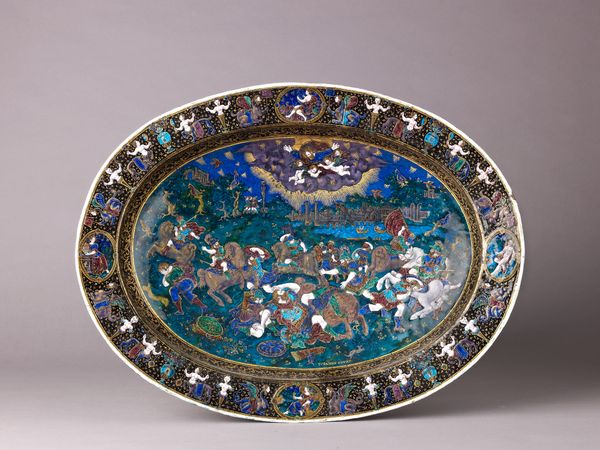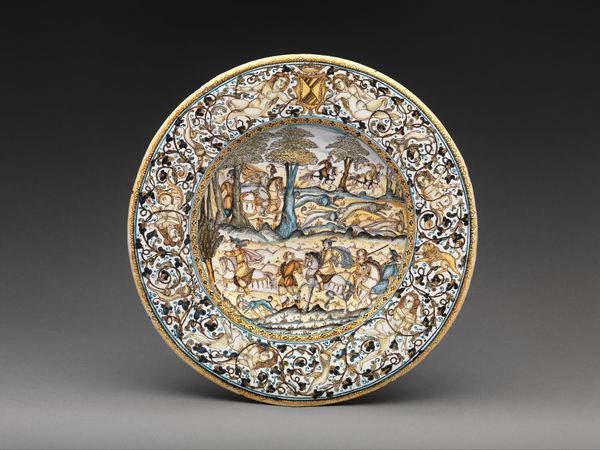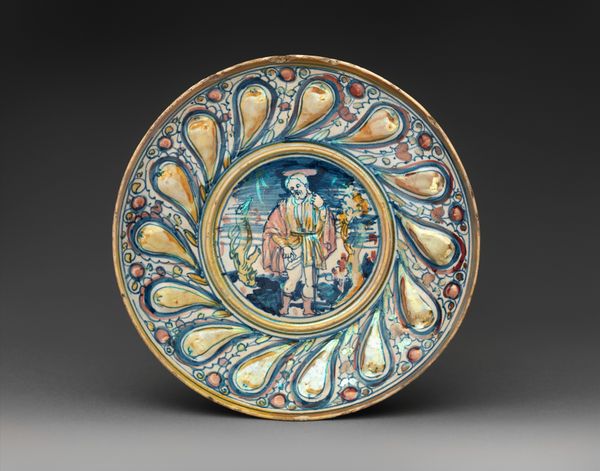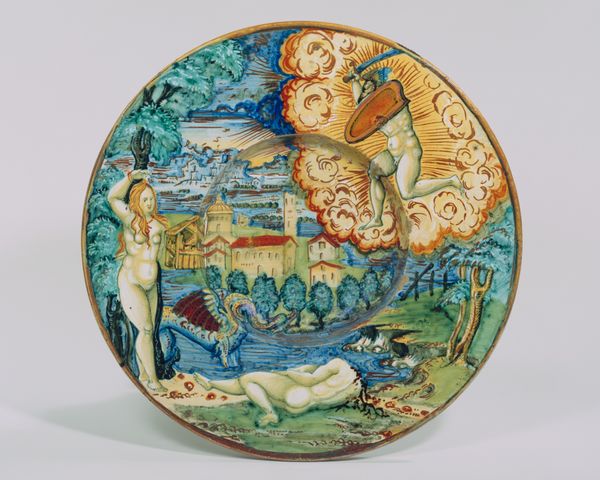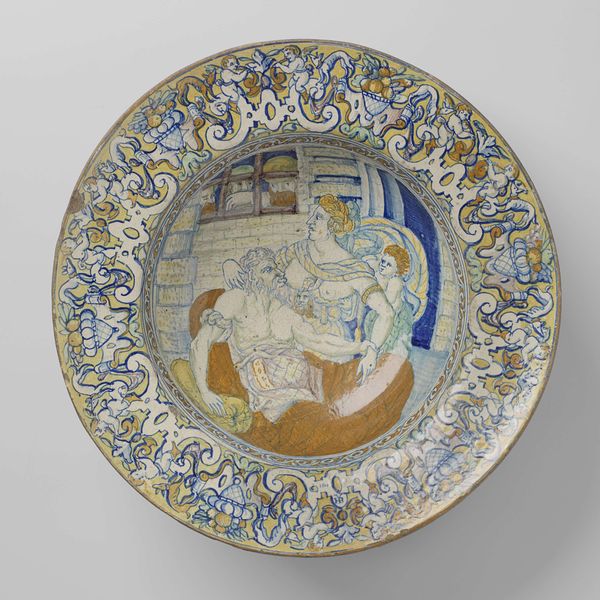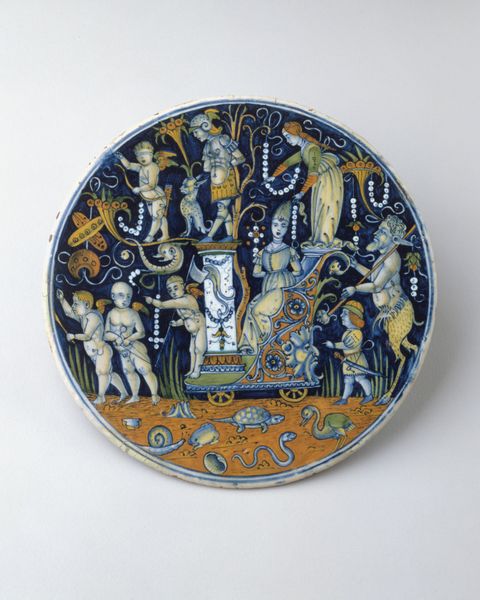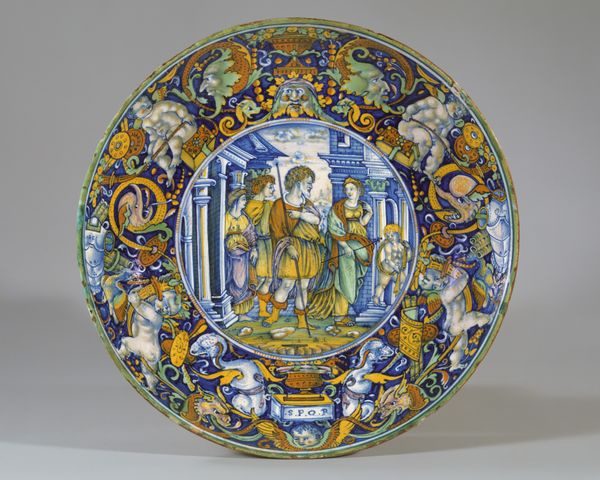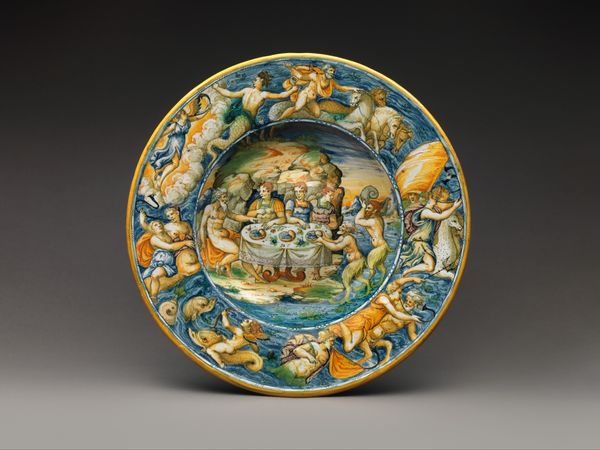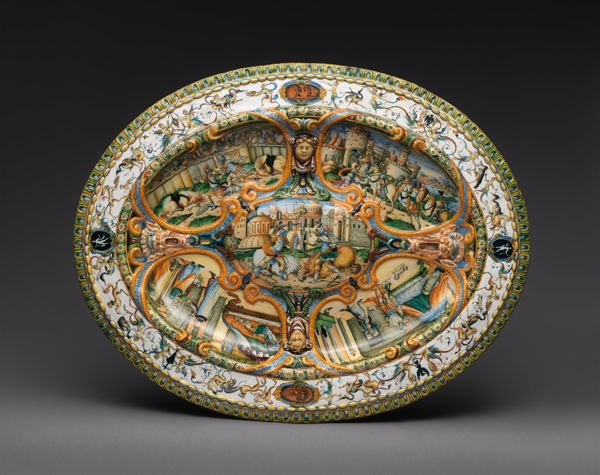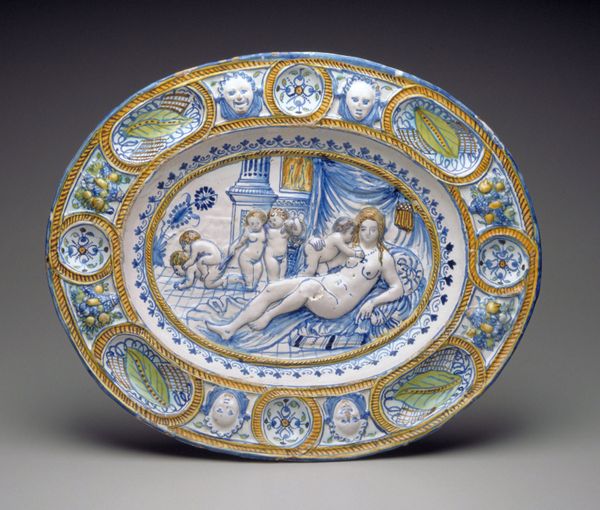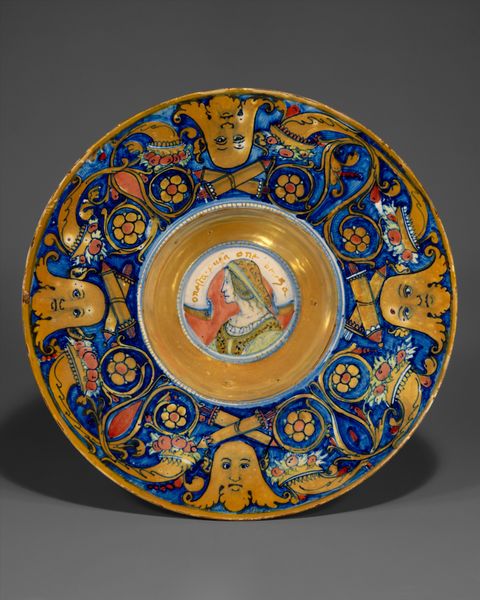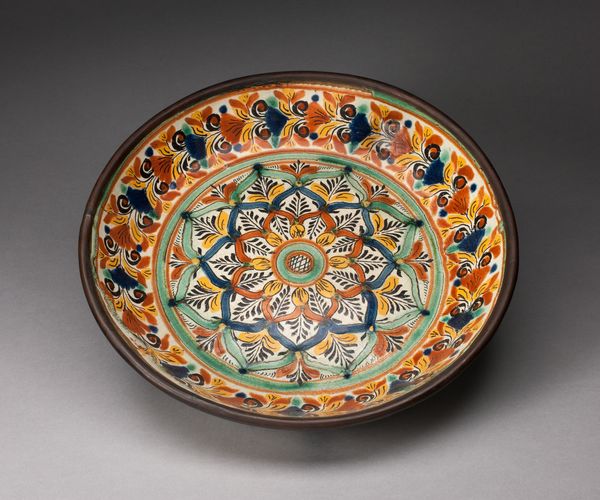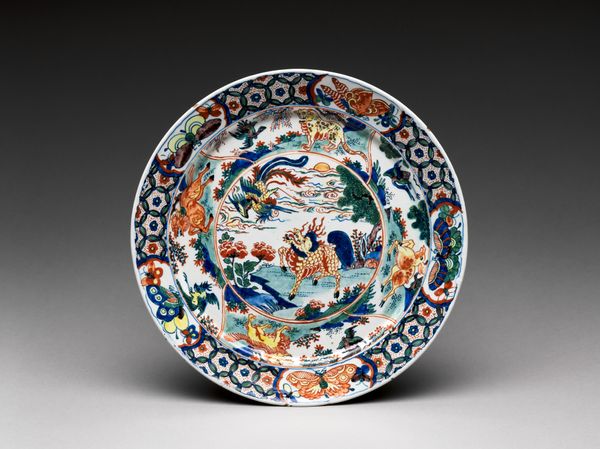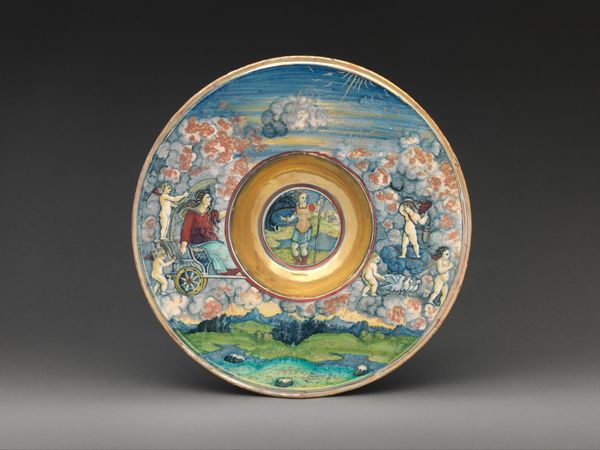
Dish: The Destruction of the Hosts of Pharaoh 1600 - 1635
0:00
0:00
ceramic
#
ceramic
#
mannerism
#
horse
#
ceramic
#
men
#
history-painting
Dimensions: 20 11/16 x 15 3/4 in. (52.5 x 40 cm)
Copyright: Public Domain
Editor: Here we have an enameled ceramic dish created by Master IC, probably Jean Court, sometime between 1600 and 1635. It's titled *The Destruction of the Hosts of Pharaoh*, and the scene is incredibly detailed. It feels chaotic and dynamic all at once. What compositional choices stand out to you in this piece? Curator: The composition hinges on a strong diagonal axis defined by the drowning army, bisecting the relative order of the Israelites from the turmoil engulfing the Pharaoh's forces. Notice the dense arrangement of figures, almost claustrophobic. How does that contribute to the work's overall impact, would you say? Editor: It definitely intensifies the feeling of panic. All those bodies packed together… it's overwhelming. But how does that tie into the... medium? Curator: The enameling process lends itself to such detail, allowing for the layering and blending of colours that create a sense of depth and movement. See how the artist uses contrasting colours and light to guide your eye through the narrative. What, in your opinion, does this juxtaposition achieve? Editor: I think it accentuates the contrast between the salvation of one group and the utter ruin of the other, right? It's almost like two separate worlds occupying the same space. And now that you point out the use of colour to guide the viewer through the painting, it is pretty distinct. Curator: Precisely. Consider the function of such a lavish dish too. It's not merely decorative but a vehicle for displaying erudition, knowledge of biblical narratives, and of course, refinement of taste. The materiality speaks to luxury, power. Editor: So, the medium and the message really amplify each other to communicate this sense of drama and importance. It makes you see it as much more than just a pretty dish. Curator: Indeed. By examining the intrinsic elements of this artwork—its colour, composition, and medium—we can uncover a wealth of information about its creation, its purpose, and its cultural context.
Comments
No comments
Be the first to comment and join the conversation on the ultimate creative platform.
